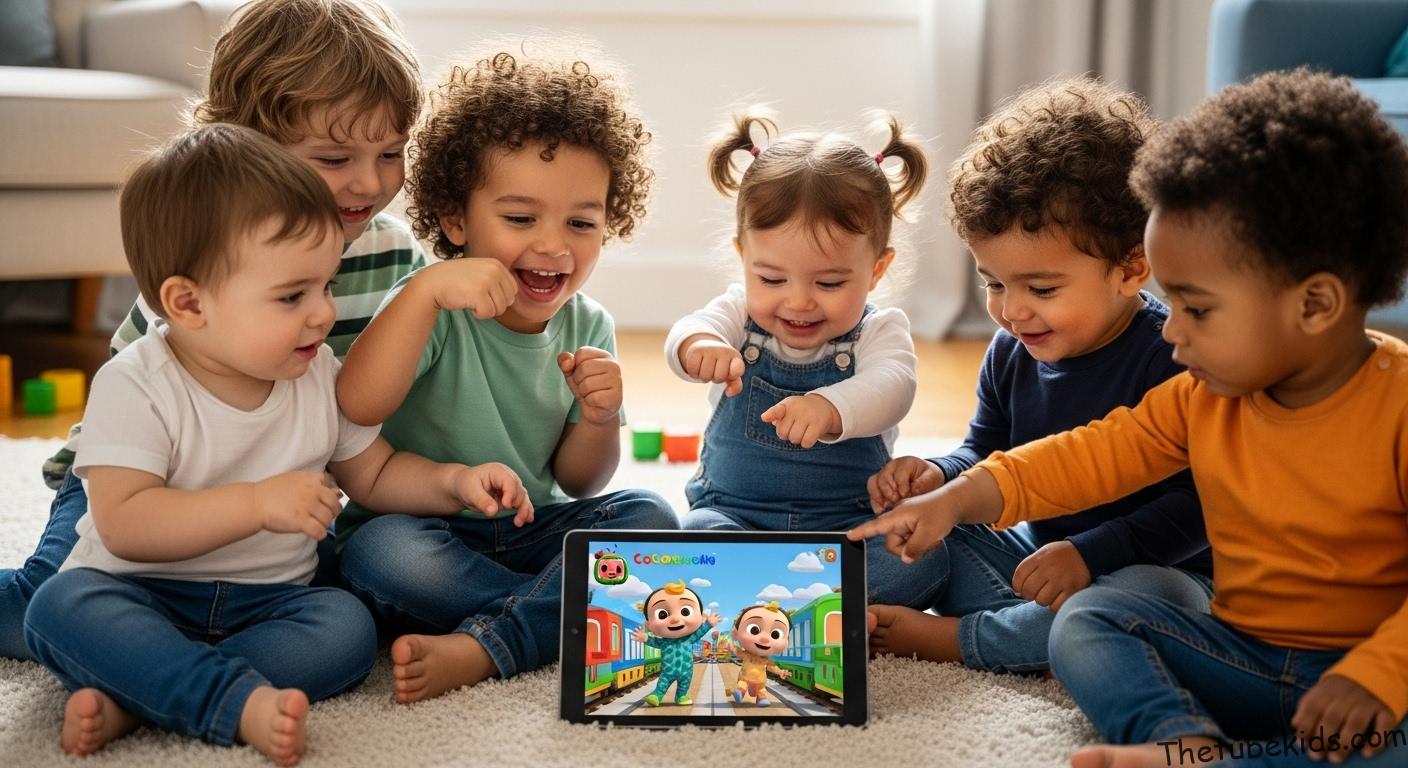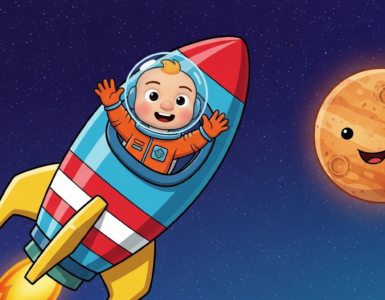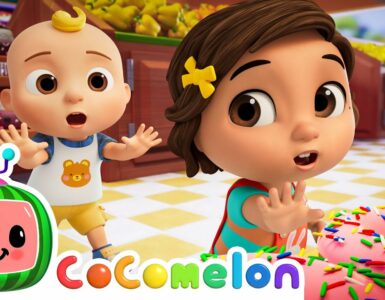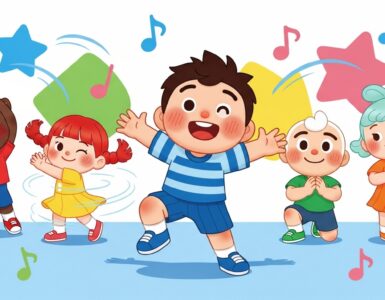If you’re a parent of a toddler, that familiar whistle and rhythmic “choo choo” sound likely brings a knowing smile (and maybe an immediate earworm!). It’s the unmistakable call of Cocomelon’s beloved train, a source of pure delight for little ones and a surprisingly catchy tune for adults.
Cocomelon, the powerhouse of children’s entertainment, has truly mastered the art of captivating young audiences globally with its vibrant animations and incredibly infectious songs. Among their vast collection of nursery rhymes, one particular tune consistently chugs its way to the forefront of kid favorites: “The Train Song,” often affectionately known by parents as the “Cocomelon Choo Choo Train” song. This isn’t just a simple melody; the Cocomelon train choo choo lyrics are carefully crafted to engage, educate, and bring joy, aligning with key early childhood development principles.
The Whistle Blows: Cocomelon’s Global Impact on Little Listeners
For millions of families, Cocomelon has become a staple, and the “Choo Choo Train” song exemplifies why. Its widespread appeal isn’t accidental; it’s rooted in a deep understanding of what resonates with toddlers and preschoolers, both emotionally and cognitively.
Unpacking the Charm: Why Cocomelon’s “Choo Choo Train” Captivates Little Minds
The magic of Cocomelon often lies in its expert simplicity, and “The Train Song” is a prime example. Its structural brilliance is perfectly suited for developing young minds.
The Cocomelon train choo choo lyrics are characterized by several carefully integrated elements that make them incredibly effective from a developmental standpoint, often lauded by early childhood educators[1]:
- Repetition is Key: Young children thrive on predictability and repetition. Phrases like “Choo choo choo choo, goes the train” and “Little train is going, going round” are repeated frequently, making them easy to learn, anticipate, and even participate in. This not only builds memory but also strengthens neural pathways related to language acquisition.
- Onomatopoeia Galore: The liberal use of sound words such as “choo choo” and “toot toot” directly mimics the sounds of a real train. This helps children connect auditory cues with real-world objects and actions, boosting early phonological awareness and fostering a deeper understanding of language.
- Action-Oriented Language: The lyrics vividly describe the train’s movement – “going round,” “coming back,” “stopping” – which naturally encourages physical movement and active engagement from children. This kinesthetic learning is crucial for toddlers’ gross motor skill development.
- Simple, Progressive Vocabulary: The words are meticulously chosen to be accessible for toddlers and preschoolers, aiding significantly in early language development and vocabulary expansion. Introducing simple concepts in a fun, musical format supports word recognition and meaning-making.
A Closer Look at the “Choo Choo Train” Lyrics
While the full lyrics are widely available for enthusiastic sing-alongs[2], let’s examine a typical verse that perfectly illustrates its enchanting appeal:
“Choo choo choo choo, goes the train,
Little train is going, going round.
Choo choo choo choo, goes the train,
Little train is going, going round.”
This verse, usually accompanied by delightful animations of JJ and his friends aboard a bright, cheerful train, beautifully captures the song’s playful spirit. The simple narrative follows the train as it travels, makes stops, and picks up various passengers, creating a mini-story that’s incredibly easy for young children to follow and understand.
Beyond the Tune: The Developmental Power of Cocomelon’s Train Song
Beyond its undeniable catchiness, there are profound developmental reasons why the Cocomelon train choo choo lyrics resonate so deeply with its young audience, often bringing a genuine smile to parents’ faces as well. Child development specialists often highlight how such content supports crucial milestones[3].

Crucial Developmental Benefits for Growing Toddlers
For toddlers, “The Train Song” is more than just entertainment; it’s a rich source of several key developmental benefits:
- Language Acquisition: The clear enunciation, repetitive phrasing, and simple vocabulary act as a powerful tool for helping children practice new words and phrases, build receptive and expressive language skills, and even anticipate upcoming lyrics.
- Gross Motor Skills: The song’s rhythmic nature and descriptions of movement naturally encourage children to mimic the train’s actions. Whether it’s swaying side to side, pretending to be a train themselves, or clapping along, it promotes physical activity and coordination, essential for healthy development.
- Cognitive Development: The song gently introduces fundamental concepts such as movement (forward, round), stopping, and sequences (picking up passengers). This fosters imaginative play, problem-solving skills, and a basic understanding of cause and effect in an age-appropriate manner.
- Emotional Connection & Predictability: The bright visuals, upbeat melody, and consistent structure create a positive, comforting, and predictable experience for children. This sense of familiarity and joy contributes to their emotional well-being and a positive association with learning[4].
The Timeless Allure of Trains: A Universal Childhood Wonder
Trains possess an inherent, almost magical fascination for children across cultures. They symbolize adventure, power, and dynamic movement. The distinctive sound of “choo choo” and the iconic whistle are universally recognizable, making this song incredibly appealing. It skillfully taps into a shared childhood wonder and ignites the imagination, transporting children on a mini-journey with every listen.
Common Questions Parents Ask About Cocomelon’s “Choo Choo Train”
Is Cocomelon’s Train Song educational for toddlers?
Absolutely! Beyond its entertainment value, the “Choo Choo Train” song is a fantastic educational tool. It significantly aids in language development through repetition and onomatopoeia, enhances gross motor skills as children mimic train movements, and boosts cognitive development by introducing concepts like movement and sequencing. Its engaging format supports early learning in a fun, low-pressure way, as affirmed by early childhood educators.
How can I use the “Choo Choo Train” song to interact with my child?
You can make it a highly interactive experience! Encourage your child to sing along, make the “choo choo” and “toot toot” sounds, and mimic the train’s movements. You can also incorporate real-life elements by playing with toy trains, drawing trains, or even going to watch real trains, all while singing the song. This helps bridge the gap between screen time and imaginative play.
What age group is the “Choo Choo Train” song best for?
The “Choo Choo Train” song is primarily designed for toddlers and preschoolers, typically ages 1 to 4. Its simple lyrics, repetitive structure, and vibrant visuals are perfectly suited to their developmental stage, making it easy for them to follow along, learn new words, and engage physically. However, even slightly older children might still enjoy its catchy tune!
All Aboard for Fun and Learning: Our Final Destination!
It’s abundantly clear that Cocomelon’s “The Train Song” is much more than just another children’s tune. Its expertly crafted Cocomelon train choo choo lyrics, brilliantly combined with captivating visuals and a delightful melody, create an immersive experience that entertains, educates, and profoundly inspires young children. Whether it’s the simple, infectious joy of hearing “choo choo” or the subtle lessons embedded about movement, friendship, and early literacy, this song has undoubtedly earned its place as a beloved and beneficial staple in homes everywhere. So, the next time you hear that familiar whistle, fully embrace the ride – because when it comes to childhood favorites that foster learning, this little train is definitely on the right track

















